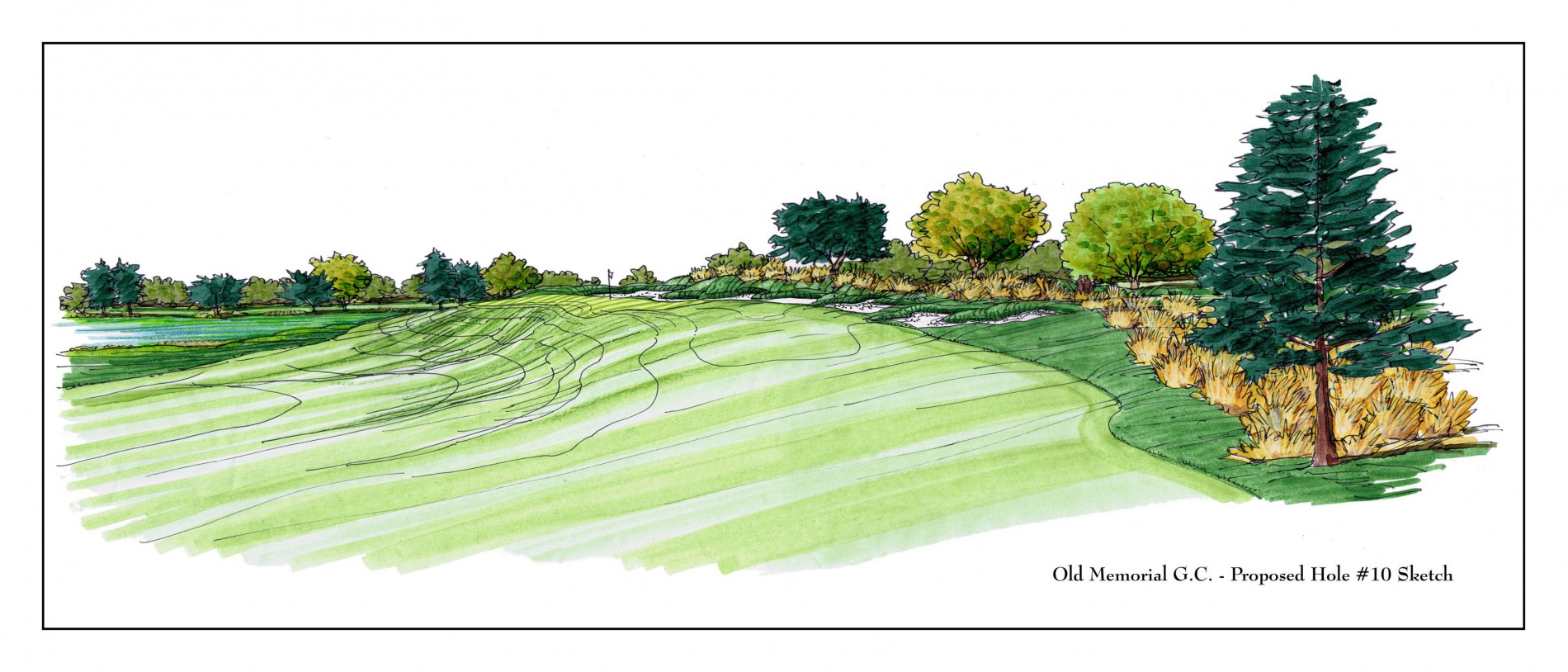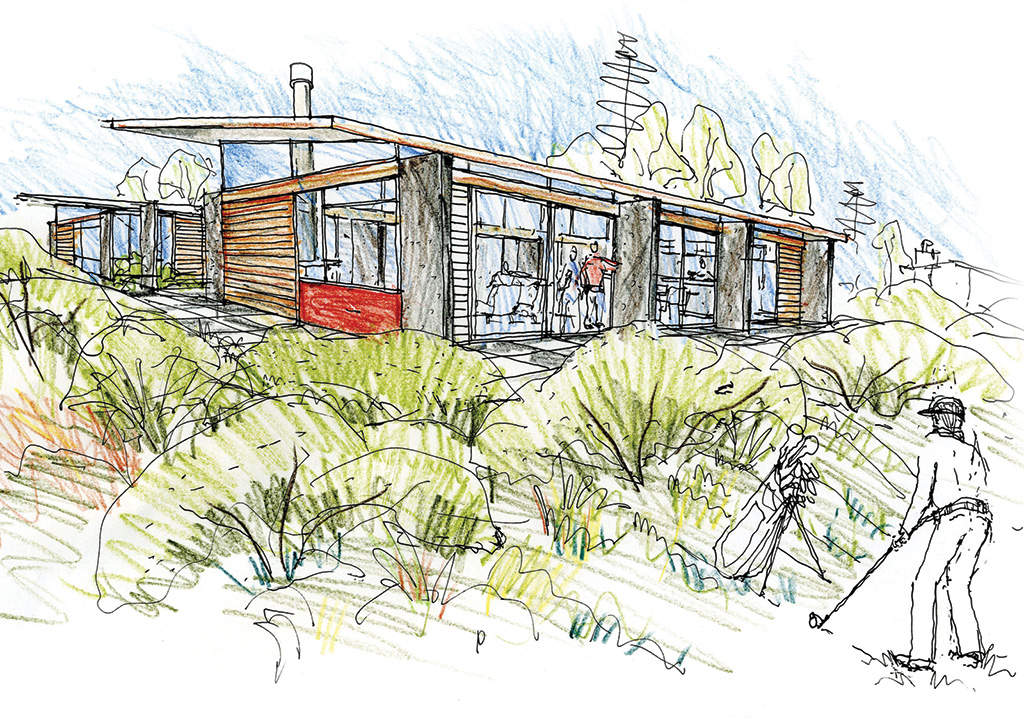Course Rating: The Art of Objectively vs Subjective
By HAL PHILLIPS
 Imagine if you and your friends tried to work out a system, along with a group of differentiating factors that enabled the ranking your respective wives or husbands... This gives you an insight into the lack of objectivity on which course rating, as a formulaic exercise, is based.
Imagine if you and your friends tried to work out a system, along with a group of differentiating factors that enabled the ranking your respective wives or husbands... This gives you an insight into the lack of objectivity on which course rating, as a formulaic exercise, is based.
But the truth is, there are strategies — driven by distinct philosophies — that raters deploy in order to assess course quality. Taken together, they can allow the reasonably logical compilation of course rankings. But it’s important to understand that none of those strategies/philosophies are held or deployed uniformly. They differ from panel to panel. Indeed, they differ from person to person within any particular panel.
All this matters because assessing course quality and eventually ranking those courses — by region or country — is something most golfers find pretty irresistible. Accordingly, see here a brief survey of the most common strategies and philosophies deployed by major ranking panels. You might find them useful when arguing with your friends in the clubhouse bar. But don’t use them to rank your spouses. Trust me: that would prove incredibly awkward and rude (!).
There are two basic schools of thought governing course ranking. The Quantitative School holds that if you come up with enough course-relevant categories (diversity, beauty, difficulty, etc.) and assign values to a course based on those categories (on a scale of 1-10), one can basically add the numbers up and rank courses accordingly.
The other school is both simpler and more complicated: It takes all the same categories into account but it assigns no concrete values to them. Advocates of this Qualitative School, lean on a famous saying from U.S. Supreme Court Justice Potter Stewart, who, when asked to define what pornography was, said, “I’ll know it when I see it.” With this course-ranking philosophy, raters take all the categories into account — weighing them according to personal preference/observation — and they simply declare this course to be superior to that one.
What are these categories? Here’s a non-exhaustive list of those that require no explanation: Design Variety, Difficulty (often termed euphemistically as “resistance to scoring), Aesthetics, and Conditioning.

See here the ones that do:
Memorability — Some believe this means how the design elements lend individuality to each hole, while also providing continuity to the entire course. That makes sense, but good golf courses should be memorable. If you can remember every hole on a golf course, it has done SOMETHING to your brain — something good.
Shot Values — I’ve never understood exactly what this is supposed to mean. Here’s the way one rating panel describes it: “How well do the holes pose a variety of risks and rewards and equally test length, accuracy and finesse?” See what I mean? The pretty much describes the entirety of a course experience. I’ve heard others describe good shot values as meaning, “I hit every club in my bag.”
Ambience — This is supposed to be distinct from Aesthetics, in that it assesses the extent to which a course reflects its natural landscape. Again, this has always confused me because it’s often a double-edge sword: If the natural landscape is unattractive and the course is a beautiful departure, that’s a good thing — but said course would not reflect the surrounding landscape particularly well. I’ve played courses that improve on the natural landscape and courses that pale in comparison…
Personally, I try to take all this stuff into account. I’m a member of the Qualitative School, and I put more stock into some factors compared to others. For example, memorability really matters to me. Difficulty doesn’t matter so much — because golf courses can and should work on a sliding scale; good courses can and should provide as much challenge as the player desires. That flexibility is part of what makes a course good, or great.
Here’s a category I created for myself: Design Efficiency. It means describes how well an 18-hole routing takes advantage of the physical landscape. Here’s an example of poor Design Efficiency: Golf holes located near the ocean that don’t offer views of the ocean, or aren’t routed close enough to bring the beach/water/cliff into play somehow. Here’s a positive example: Courses on flat terrain that make multiple use of elevation, i.e. single dune or hill that nevertheless positively affects 3-4 separate holes.
Here’s another: What’s the worst hole out there? I like this question in general. It makes club members really think objectively about their courses (I love asking architects this question — about courses they’ve designed!). It’s also quite useful when trying to rank one course ahead/behind another — when both are clearly very good. For example: Pebble Beach vs. Cypress Point. The worst hole at Pebble is probably no. 1, maybe no. 11. The worst hole at Cypress is clearly no. 18. But if we refine the question, it tells us far more: How many bad or ordinary holes are there? It’s easy to reach consensus on the fact that that Pebble has 4-5 pretty ordinary holes, while Cypress has just 1-2.
Design variety is similarly useful, as a tool, because it’s something upon which two people who think very differently about course design can agree. For example, a Quantitative person and Qualitative person can agree that among the par-5s on a single course, it’s important that one or two can potentially be reached in two strokes. What’s more, if I’ve played a golf course and I hit 7-iron at every par-3 (or every par-3 plays to plateau green), that indicates a lack of design variety.
On the other hand, I think the bunkers on a golf course should share more or less a single design style — I don’t value “design variety” in this respect. If 16 putting greens feature subtle, understated contour and the other 2 are really flamboyant, that’s another example of design variety that works against a course, in my view.
Course raters should be able to agree on one thing: Only the course matters — not the opulence of the clubhouse, not the quality of the caddies, not the food in restaurant, not the variety of apparel in the pro shop. But you’d be surprised how much this ancillary stuff can influence people, raters included. The good news: While responsible raters are obliged to block out everything but the course, golfers are not. They can rate and rank the entire “golf experience” from course to course.
Good luck coming up with an overarching strategy and philosophy for all that.
Hal Phillips is managing director of Mandarin Media, Inc., a content/digital marketing firm that has been working from Southeast Asia since 1993. A working journalist for 35 years, he has been a member of the GOLF Magazine course-rating panel since 1997.

















